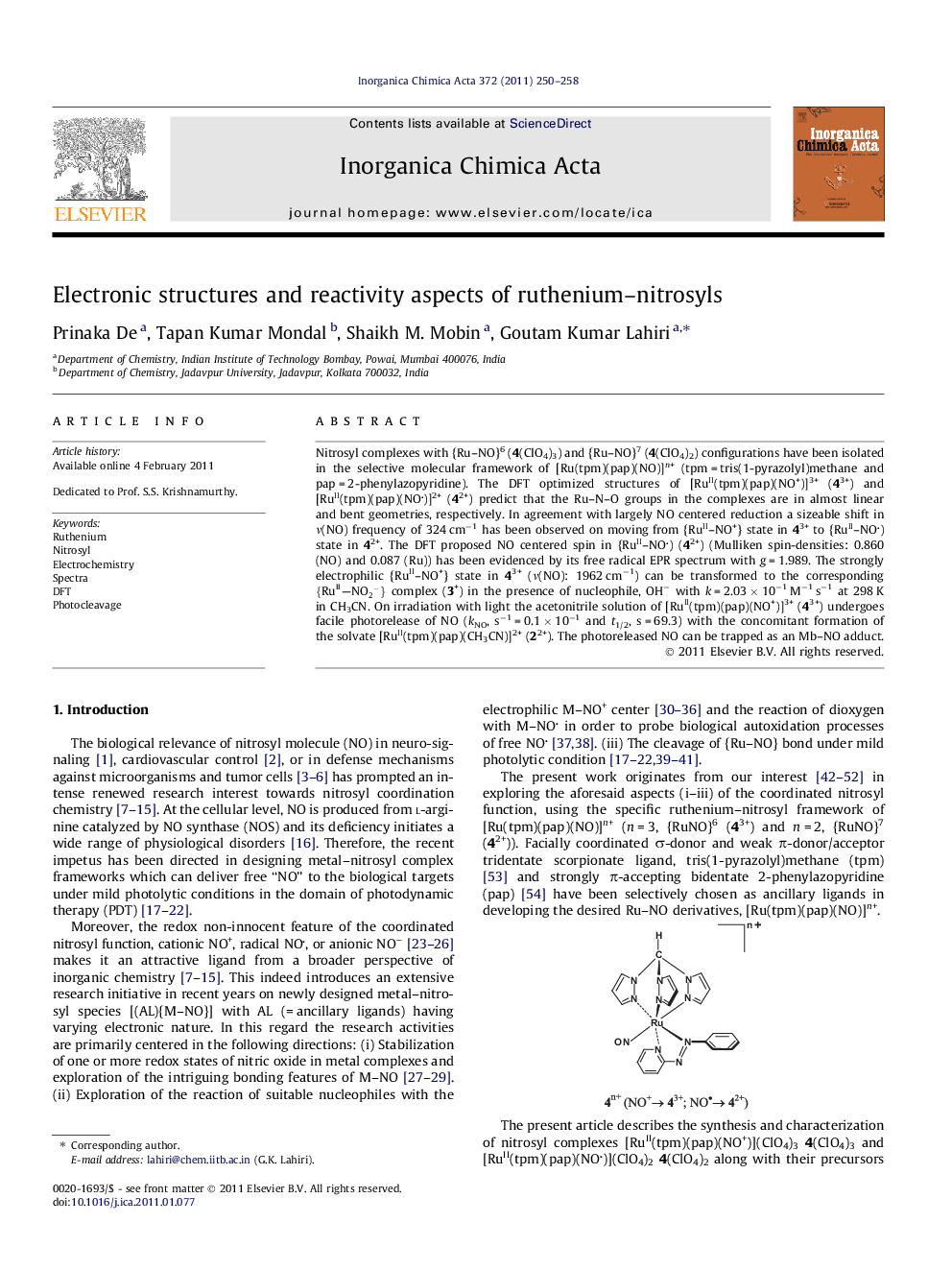| کد مقاله | کد نشریه | سال انتشار | مقاله انگلیسی | نسخه تمام متن |
|---|---|---|---|---|
| 1308898 | 975188 | 2011 | 9 صفحه PDF | دانلود رایگان |

Nitrosyl complexes with {Ru–NO}6 (4(ClO4)3) and {Ru–NO}7 (4(ClO4)2) configurations have been isolated in the selective molecular framework of [Ru(tpm)(pap)(NO)]n+ (tpm = tris(1-pyrazolyl)methane and pap = 2-phenylazopyridine). The DFT optimized structures of [RuII(tpm)(pap)(NO+)]3+ (43+) and [RuII(tpm)(pap)(NO)]2+ (42+) predict that the Ru–N–O groups in the complexes are in almost linear and bent geometries, respectively. In agreement with largely NO centered reduction a sizeable shift in ν(NO) frequency of 324 cm−1 has been observed on moving from {RuII–NO+} state in 43+ to {RuII–NO) state in 42+. The DFT proposed NO centered spin in {RuII–NO) (42+) (Mulliken spin-densities: 0.860 (NO) and 0.087 (Ru)) has been evidenced by its free radical EPR spectrum with g = 1.989. The strongly electrophilic {RuII–NO+} state in 43+ (ν(NO): 1962 cm−1) can be transformed to the corresponding {RuII–NO2-} complex (3+) in the presence of nucleophile, OH− with k = 2.03 × 10−1 M−1 s−1 at 298 K in CH3CN. On irradiation with light the acetonitrile solution of [RuII(tpm)(pap)(NO+)]3+ (43+) undergoes facile photorelease of NO (kNO, s−1 = 0.1 × 10−1 and t1/2, s = 69.3) with the concomitant formation of the solvate [RuII(tpm)(pap)(CH3CN)]2+ (22+). The photoreleased NO can be trapped as an Mb–NO adduct.
The change in Ru–N–O configuration from linear to bent on moving from {Ru–NO}6 state in 43+ to {Ru–NO}7 state in 42+ has been reflected in the shift in ν(NO) frequency from 1962 to 1638 cm−1. Though {RuII–NO} in 42+ is inert towards photocleavage process, the {RuII–NO+} in 43+ undergoes spontaneous photorelease of NO on exposure to a light source.Figure optionsDownload as PowerPoint slideResearch highlights
► Ruthenium–nitrosyl complexes with {Ru–NO}6 and {Ru–NO}7 configurations.
► Electronic structures of ruthenium–nitrosyl derivatives.
► Photocleavage of {Ru–NO} bond and scavenging of the liberated NO by myoglobin.
► Mechanistic aspects of the reaction of nucleophile with electrophilic {Ru–NO+}.
Journal: Inorganica Chimica Acta - Volume 372, Issue 1, 15 June 2011, Pages 250–258